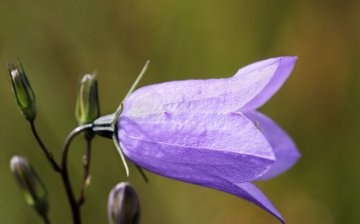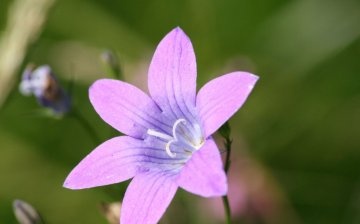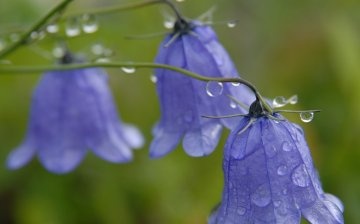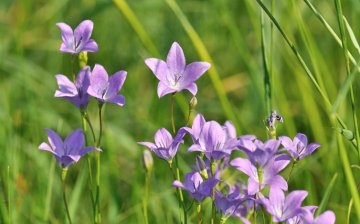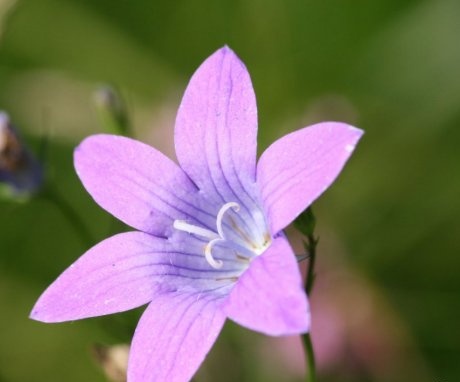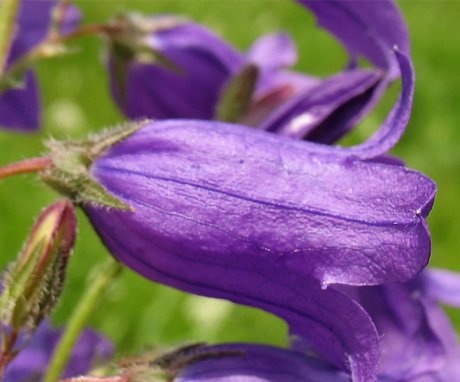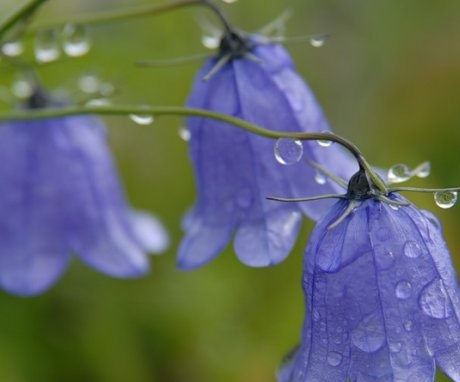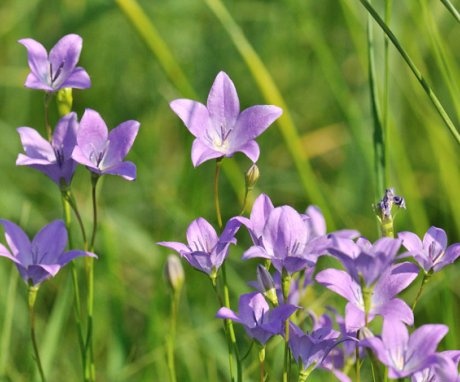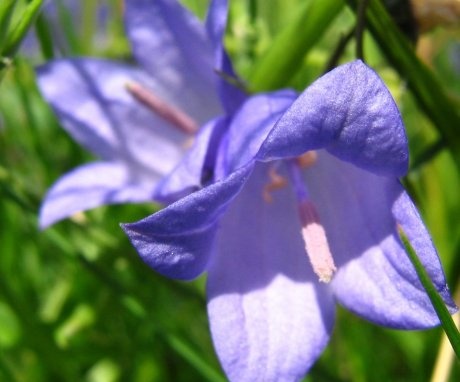Meadow bell: the secrets of growing and useful properties of the plant
The plant got its name from the shape of the flower, which resembles a small graceful bell. Wonderful appearance - that's what they conquer bells florists. These flowers are familiar to us from childhood. Most often they can be seen in forests or meadows. Flowers can grow in groups or singly. We are used to the rich blue color, but there are bells in white, pink, purple and blue shades. The peak of their flowering occurs during the warm season.
Content:
- Bell varieties
- How to grow a bell in the garden?
- Transplanting a meadow bell
- Care and reproduction of the meadow bell
- Uses and properties of the meadow bell
Bell varieties
Field bell - far from the only species, there are about three hundred of them on the planet. There are other varieties that are similar in appearance and almost identical in growing methods.
Bell varieties:
- Middle bell. The flowers of this plant are fragile and very similar to crystal ones. The air bell will decorate the garden. Despite its beauty, this species is quite tenacious. Even not with the most experienced gardeners, it will bloom. The buds come in three colors: white, pinkish, and blue. The flower is biennial. In the last days of May, pour the seeds into the open ground; it is not necessary to plant seedlings. The variety tolerates low temperatures well, but young plants should still be covered with fallen leaves. Be sure to place a support a little more than fifty centimeters high and leave thirty centimeters gaps between the flowers.
- Bell of Portenchlag. Many gardeners are touched by its delicate violet shades and enchanting simplicity. This bell - perennial... Can be sown in spring, autumn, as well as at the end of May. seedlings... The flower is about three centimeters in diameter. The shoot can produce five flowers. The distance between plants is at least fifteen centimeters. The plant is very frost-resistant, therefore, even in cold weather, they can not be covered.
- Bell Pozharsky. He is a resident of not only well-tended gardens, but also spacious fields. The plant lives for many years and is resistant to cold weather. Inflorescences in the form of a brush, there are pink, lilac and blue flowers. The flowers are small - about two and a half centimeters in diameter.
- Bell Carpathian. This plant - perennial, the flowers are lilac, blue, white and blue. The shape is bell-funnel-shaped, the flower is about five centimeters in diameter. Can be sown both in spring and before winter, grown from seedlings and from seed... In winter, fallout is possible due to excessive soil moisture. Flowers require mandatory watering. There are many stems, but they are thin, slightly raised.
How to grow a bell in the garden?
A special effort to grow bell, you don't have to apply. But nevertheless, if you want to have beautiful representatives of bells with large buds and preservation of decorativeness during the entire growing season, as well as constant and long flowering on a flower bed, then you should take care of good conditions for flowers.
Most of the cultivated species love lighted, open places, but there are also species that grow in the wild in forests, so they prefer to develop in a shaded place. And if we consider the period of flowering of bells, then in the shade they will bloom longer. Remember when choosing a place for planting that this culture cannot tolerate stagnant melt or rainwater, loamy or clay soils will also not work for it.
Fertilize the soil well, the soil must be drained, the reaction must be either neutral or slightly acidic.
Species that grow in the wild on rocky areas are accustomed to poor land with a slightly alkaline reaction, therefore, before planting such a plant, the soil is limed. To improve the structure of the soil, add sand or mineral fertilizers, if the soil is sandy, then add humus, turf or compost. Diseases can be caused by the use of fresh peat or manure, so they are not recommended to use.
Transplanting a meadow bell
Plant or transplant bells possible in autumn and spring. Flowers have a developed root system with a huge number of small roots, therefore, when digging them, leave a large lump of earth so as not to damage the roots.
To help the plant take root, water it heavily after transplanting.
Before the procedure transplants holes can also be watered. There are species with taproots - it is better to plant them in early spring, crops with less developed rhizomes can be planted at the end of spring in already warmed soil. If you don't want to plant the flower in the spring, try to plant it before September. Species with small roots can be transplanted even during the flowering period.
Care and reproduction of the meadow bell
All care consists of loosening and weeding. In dry years, moderate watering is necessary, and also do not forget about feeding... Nitrogen and phosphorus fertilizers will contribute to early flowering and an increase in vegetative mass; in the fall, add potassium, which increases the resistance to cold snaps.
If the species loves alkaline or neutral soils, then add ash, as it helps to reduce acidity.
You can feed it with mineral fertilizers.
Remove dried flowers - in this case, the bell will bloom longer. If you want seeds, try to collect the pods before opening them. In tall flowers, faded shoots are cut off.
Plant propagation:
- The flower can be propagated as seedsand vegetatively.
- Be sure to look at the species before breeding. Annuals and biennials only reproduce when young. cuttings in spring and seeds, but perennials are often propagated vegetatively, with the exception of plants whose roots resemble a rod or brush in shape. They are propagated by seeds, as they are considered vegetatively immobile. It is more convenient to propagate plants with long roots by segments of rhizomes.
- You need to sow seeds either in the fall or in the spring, or you can grow seedlings, you need to plant them when three leaves appear.
- Vegetative reproduction has its advantages, since a flower similar to the mother will grow in the future. There are species that can be propagated by division in the first year, but it usually takes about three years before this method can be used.
Most species are frost-resistant and do not need shelter. Only a few people from southern countries can die, they need to be covered.
Uses and properties of the meadow bell
Bell has many delicious properties used in traditional medicine. The plant has the ability to stop minor bleeding, relieve pain, soothe.
The fact is that a beautiful flower contains biological substances that can heal some diseases.It is carotene, coumaric and caffeic acids, calcium, phosphorus and magnesium that provide such a beneficial effect on the human body. Flowers and leaves contain a considerable amount of ascorbic acid. The roots are not used for the preparation of medicines, only the stems, leaves and flowers are used. The flowering period is the best time to harvest.
In addition to medicine, young leaves are used for cooking, if roots are needed, then dig them up either in March or in November.
When cutting off the tops, do not forget that the largest copies should be left for divorce. Tie the plants in bunches and hang them in a dark but well-ventilated area to dry out the flowers faster. Put the dried bells in boxes, try not to wrinkle them. Yes, this plant can be used in the preparation of various medicines.



